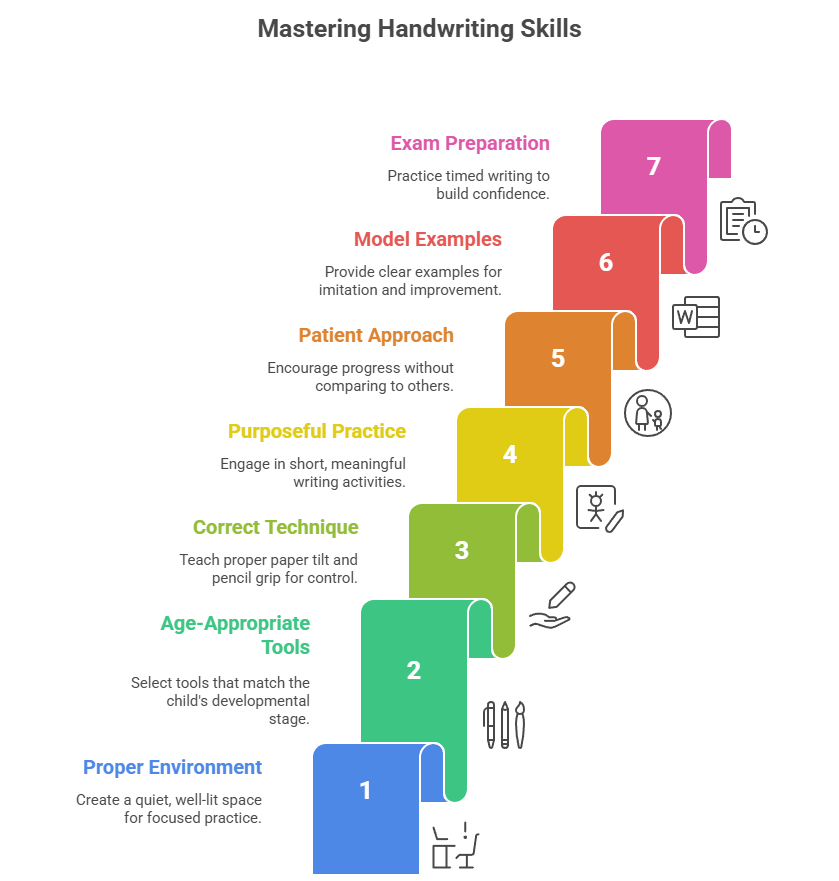
Introduction: Small Habits, Big Results
While handwriting is taught in school, parents play a powerful role in shaping how well a child writes. The good news? You don’t need to be a teacher or invest in coaching classes. With a few thoughtful routines at home, you can help your child write faster, neater, and more confidently.
1. Create a Proper Writing Environment
Set up a quiet, clutter-free space with good lighting, a writing table, and a chair that suits your child’s height. Ensure the table and chair help your child sit upright — with feet flat, elbows relaxed, and back supported.
2. Choose the Right Writing Tools
Use age-appropriate writing tools:
- Kindergarten: thick pencils or crayons with good grip
- Primary: triangular pencils or pens with a cushioned grip
- Upper grades: lightweight pens with smooth ink flow
Avoid frequent switching between pens and pencils, as this can disrupt motor memory
3. Check Posture, Paper Position, and Grip
- The paper should be slightly tilted (right-handed = left tilt; left-handed = right tilt)
- Pencil grip should be gentle — held between thumb, index, and middle fingers
- Avoid tight gripping or bending the wrist excessively
These small corrections help reduce writing fatigue and improve control.
Make Practice Purposeful and Short
Don’t force long writing sessions. Instead:
- Ask your child to copy 2–3 sentences neatly from a textbook
- Use stickers or stars for effort, not perfection
- Let them write letters to grandparents, label jars, or keep a simple journal
Handwriting improves with purpose, not pressure.
5. Focus on Patience, Not Comparison
Avoid comparing your child’s writing with others. Every child develops fine motor skills at a different pace. Praise visible effort, encourage patience, and celebrate small improvements.
6. Use Model Writing for Imitation
Instead of random sentences, give your child examples to trace or imitate:
- Highlight proper letter size, uniform slant, and spacing
- Use 4-line and 2-line notebooks, based on age
7. Practice for Exams, Too
Use model question papers and timed writing once a week. This helps build fluency, speed, and confidence — especially for board classes.
Conclusion: You’re the First Coach
As a parent, your words, environment, and encouragement are more powerful than any tuition centre. At Writewiz, we believe that when home and school align, children thrive.
By building a few simple writing habits at home, you’ll be gifting your child a skill that builds confidence, improves marks, and lasts a lifetime.

